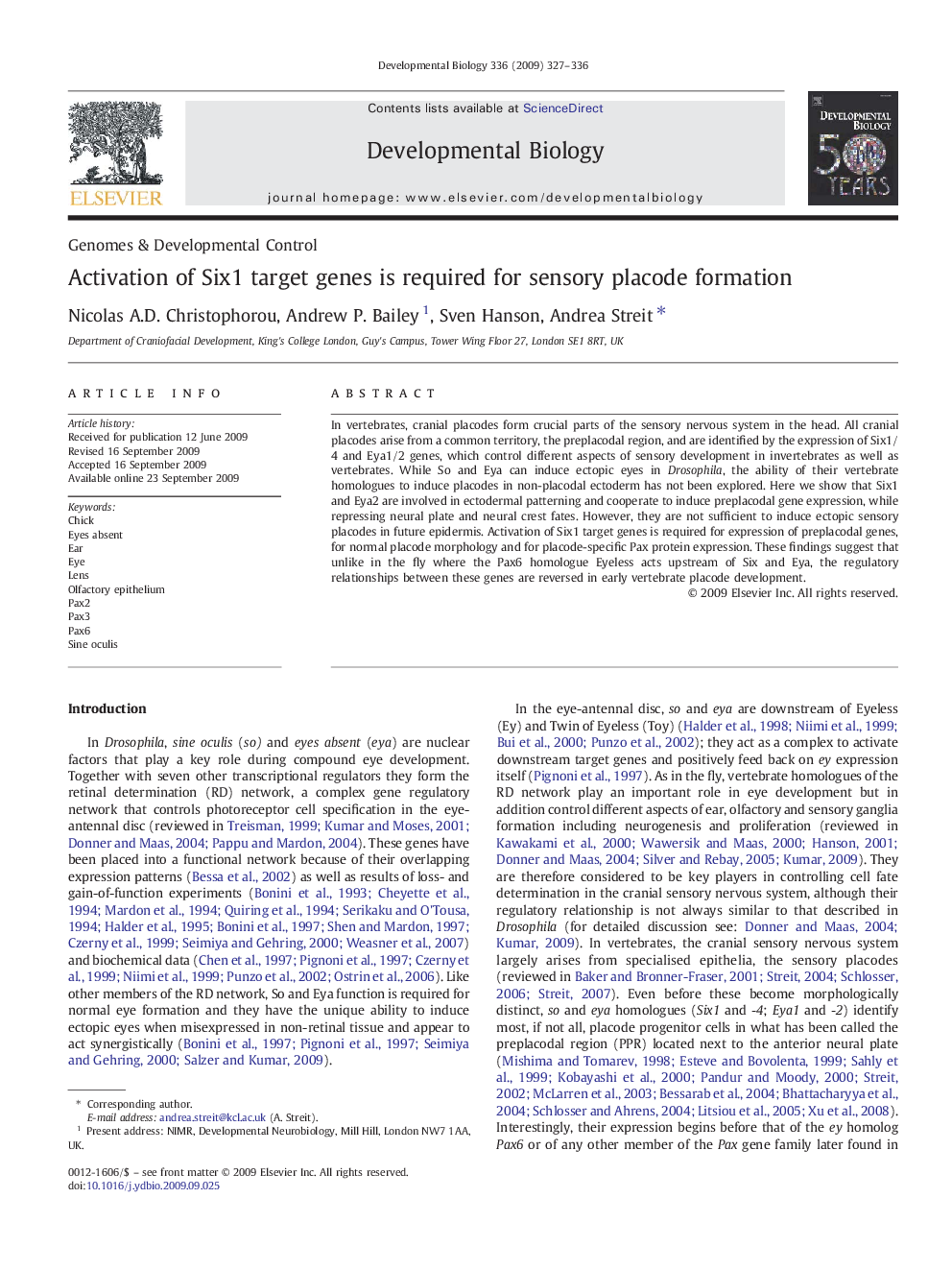| Article ID | Journal | Published Year | Pages | File Type |
|---|---|---|---|---|
| 10933225 | Developmental Biology | 2009 | 10 Pages |
Abstract
In vertebrates, cranial placodes form crucial parts of the sensory nervous system in the head. All cranial placodes arise from a common territory, the preplacodal region, and are identified by the expression of Six1/4 and Eya1/2 genes, which control different aspects of sensory development in invertebrates as well as vertebrates. While So and Eya can induce ectopic eyes in Drosophila, the ability of their vertebrate homologues to induce placodes in non-placodal ectoderm has not been explored. Here we show that Six1 and Eya2 are involved in ectodermal patterning and cooperate to induce preplacodal gene expression, while repressing neural plate and neural crest fates. However, they are not sufficient to induce ectopic sensory placodes in future epidermis. Activation of Six1 target genes is required for expression of preplacodal genes, for normal placode morphology and for placode-specific Pax protein expression. These findings suggest that unlike in the fly where the Pax6 homologue Eyeless acts upstream of Six and Eya, the regulatory relationships between these genes are reversed in early vertebrate placode development.
Related Topics
Life Sciences
Biochemistry, Genetics and Molecular Biology
Cell Biology
Authors
Nicolas A.D. Christophorou, Andrew P. Bailey, Sven Hanson, Andrea Streit,
